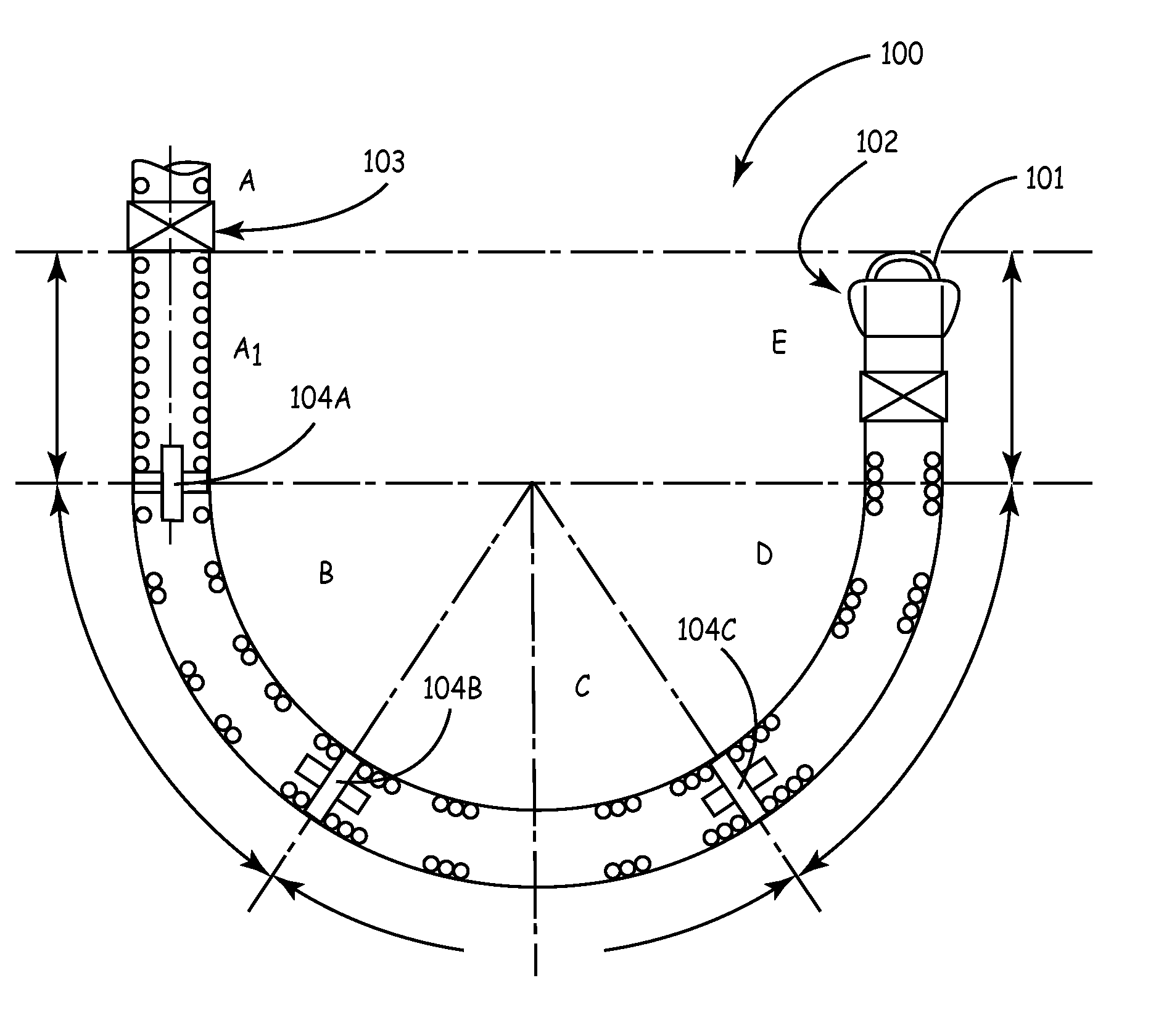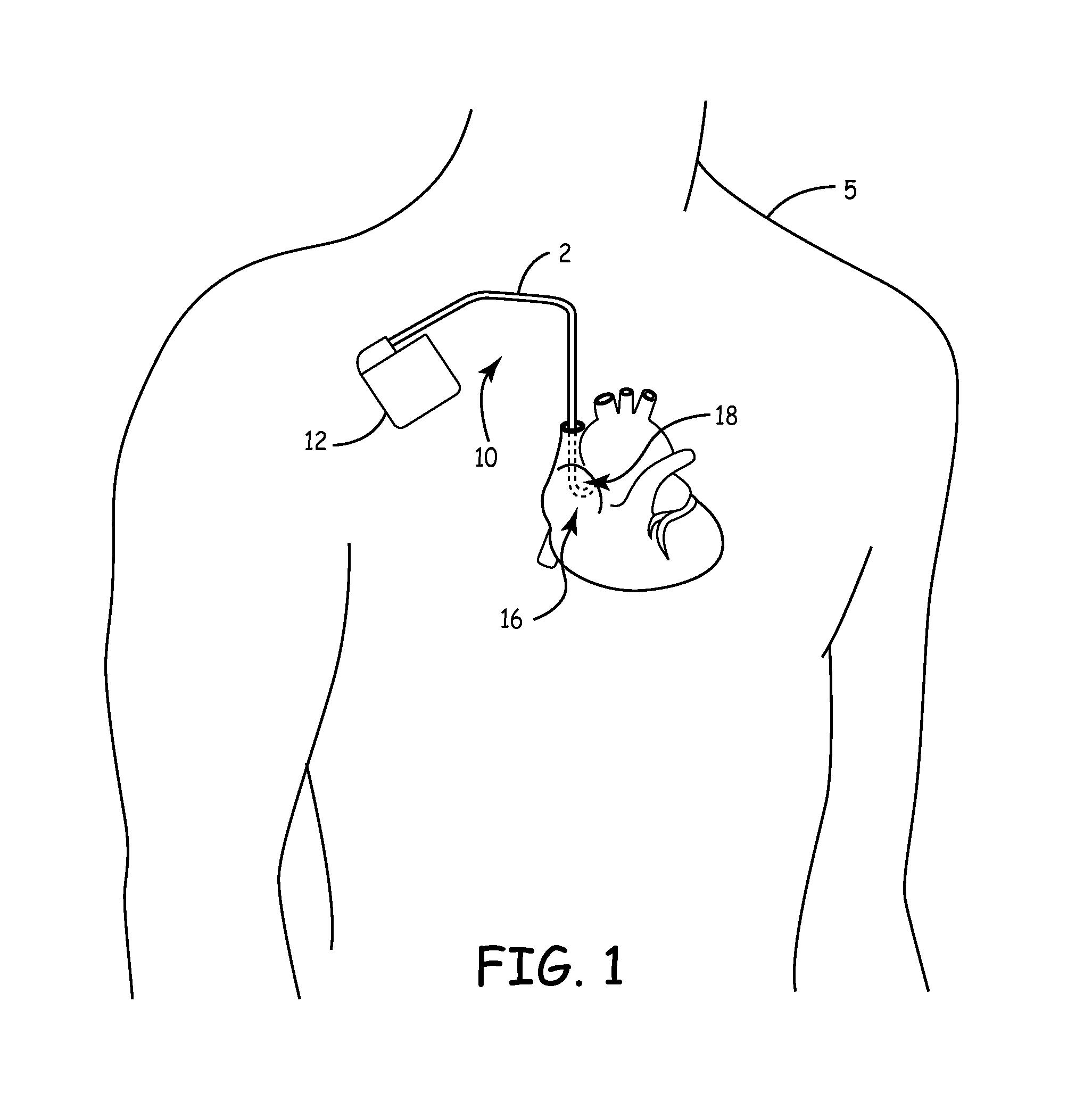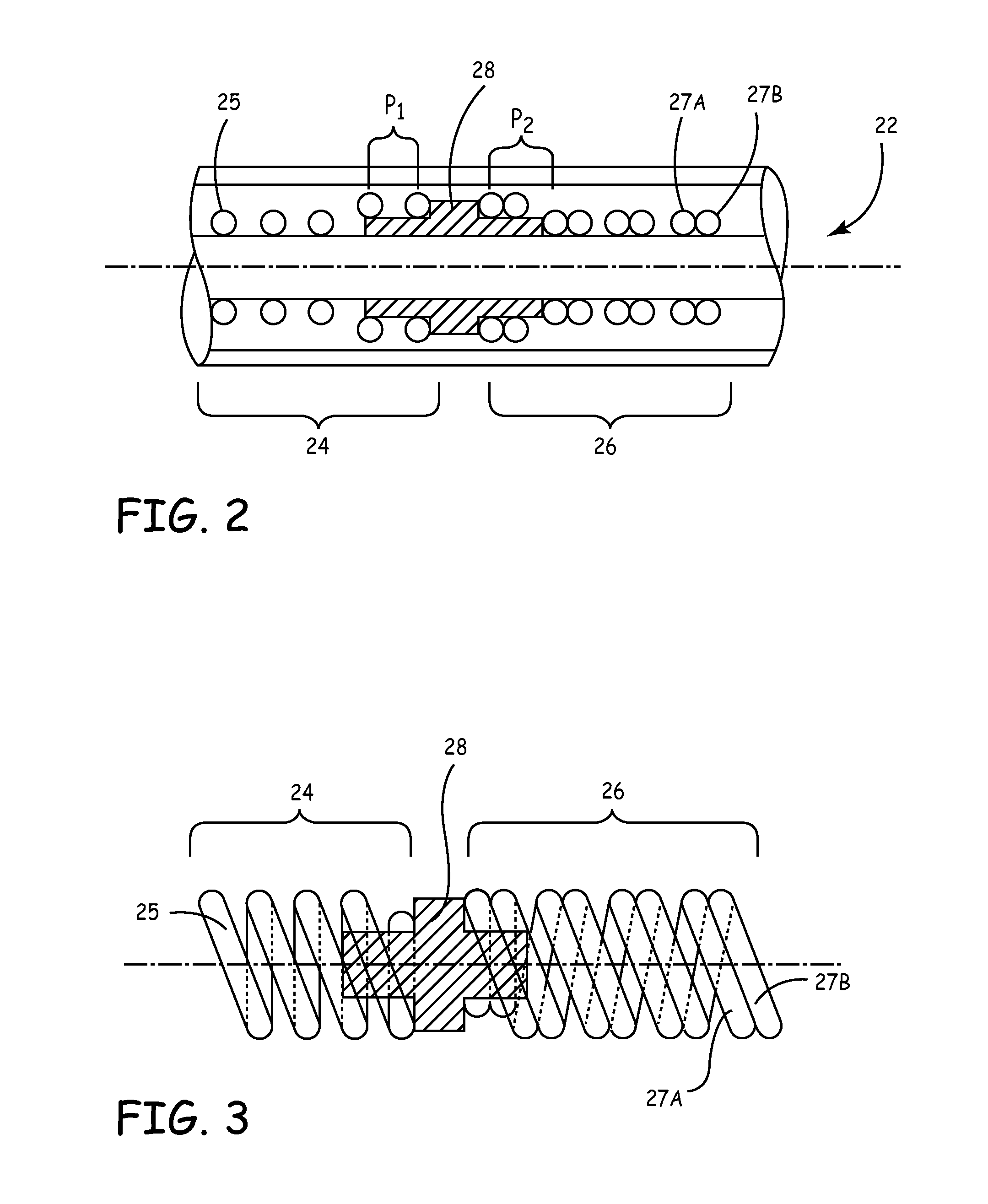Implantable medical lead designs
a technology of medical leads and implants, applied in the field of medical devices, can solve the problems of affecting the shape of the medical, affecting the ability to adequately anchor the tip of the medical in the tissue, and the removal of the patient is much more traumatic, so as to improve the stiffness of the medical lead, improve the stiffness, and reduce the impact of bending stress
- Summary
- Abstract
- Description
- Claims
- Application Information
AI Technical Summary
Benefits of technology
Problems solved by technology
Method used
Image
Examples
Embodiment Construction
[0030]The invention is directed to medical leads for use in implantable medical devices. Various features of medical leads are described, many of which may be useful in a variety of different leads used for a variety of different applications. In one embodiment, the invention provides a medical lead of varying stiffness characteristics. In another embodiment, the invention provides a medical lead having a semi-conical shaped distal tip that becomes wider at more distal tip locations. In other words, the distal tip tapers radially outward. The distal tip may be semi-concial in that it takes a form that corresponds to a portion of a cone. These and other embodiments described herein may be used to improve medical leads for a wide variety of applications. Such applications may include specific applications in which a distal end of the lead is implanted in the roof of a patient's right atrium. When implantation in the right atrium is desired, the lead may be formed into a J-shape at a d...
PUM
 Login to View More
Login to View More Abstract
Description
Claims
Application Information
 Login to View More
Login to View More - R&D
- Intellectual Property
- Life Sciences
- Materials
- Tech Scout
- Unparalleled Data Quality
- Higher Quality Content
- 60% Fewer Hallucinations
Browse by: Latest US Patents, China's latest patents, Technical Efficacy Thesaurus, Application Domain, Technology Topic, Popular Technical Reports.
© 2025 PatSnap. All rights reserved.Legal|Privacy policy|Modern Slavery Act Transparency Statement|Sitemap|About US| Contact US: help@patsnap.com



